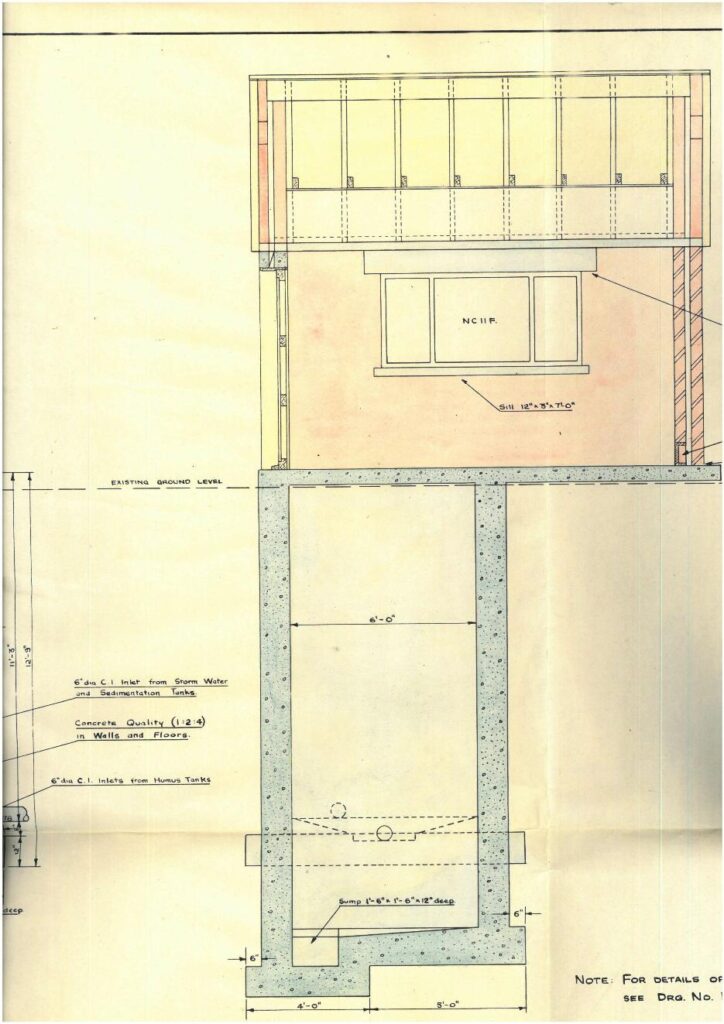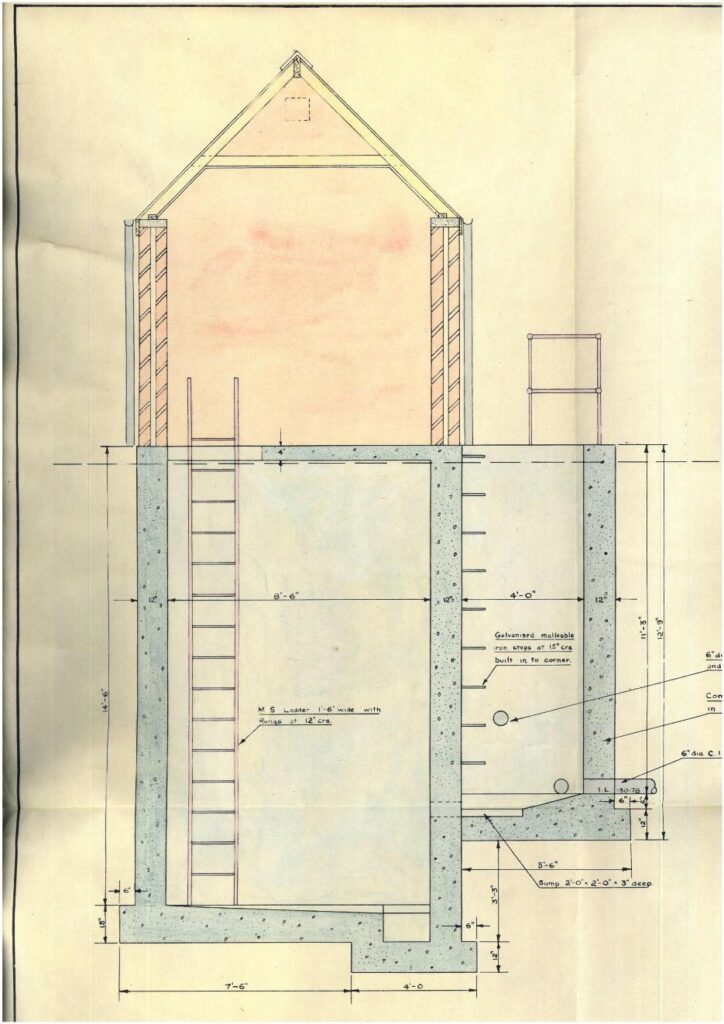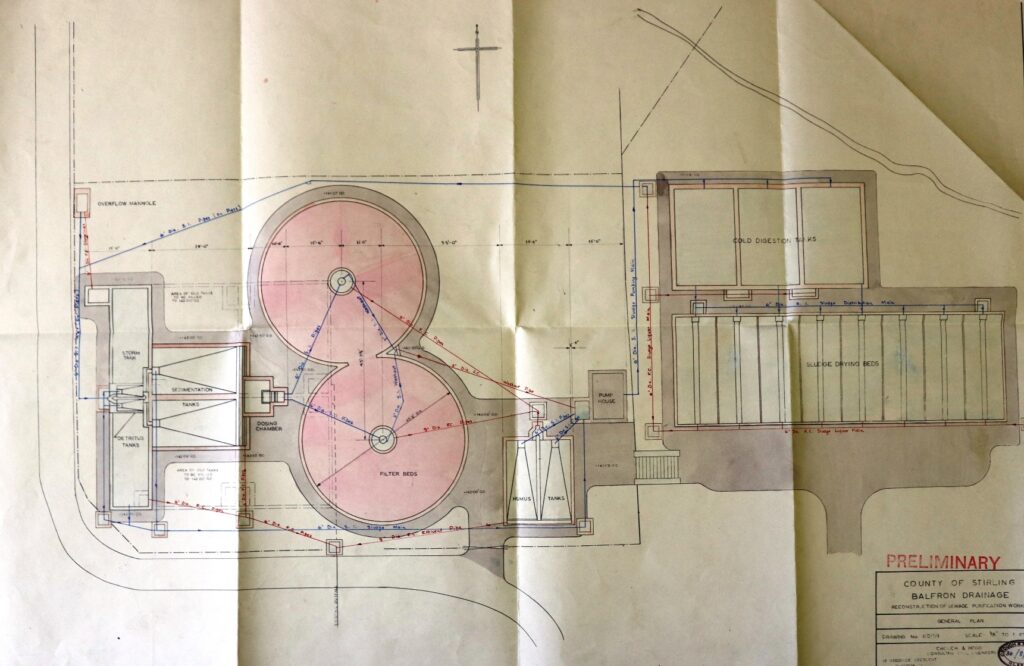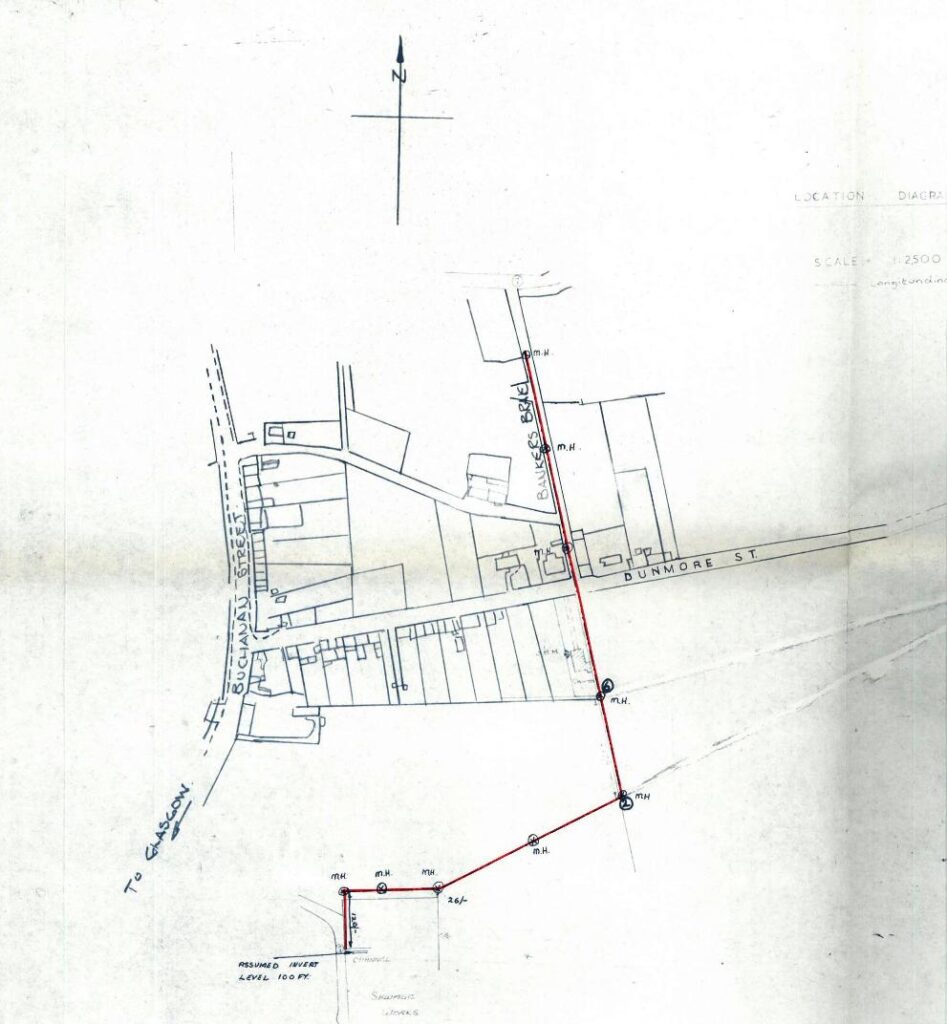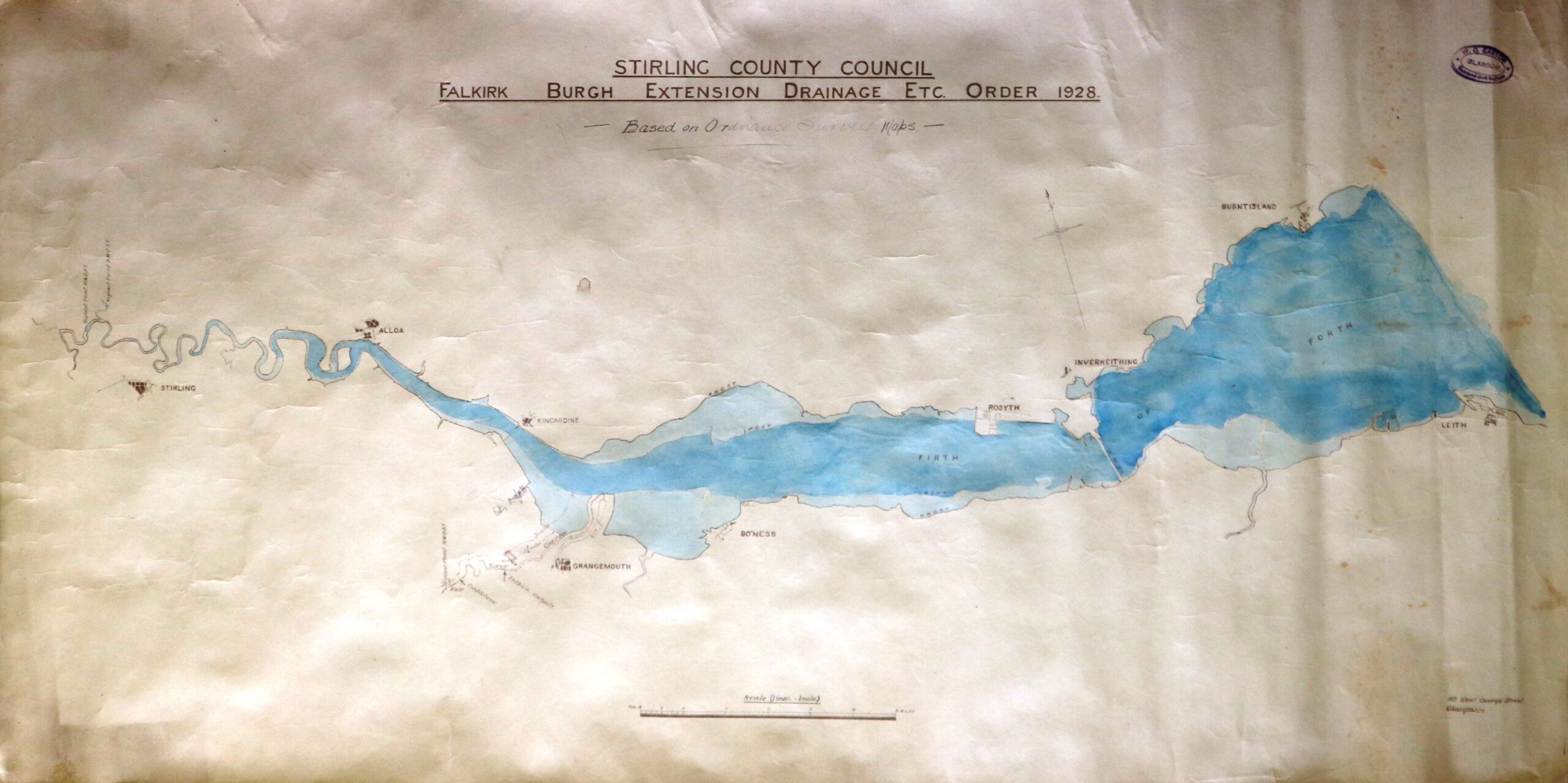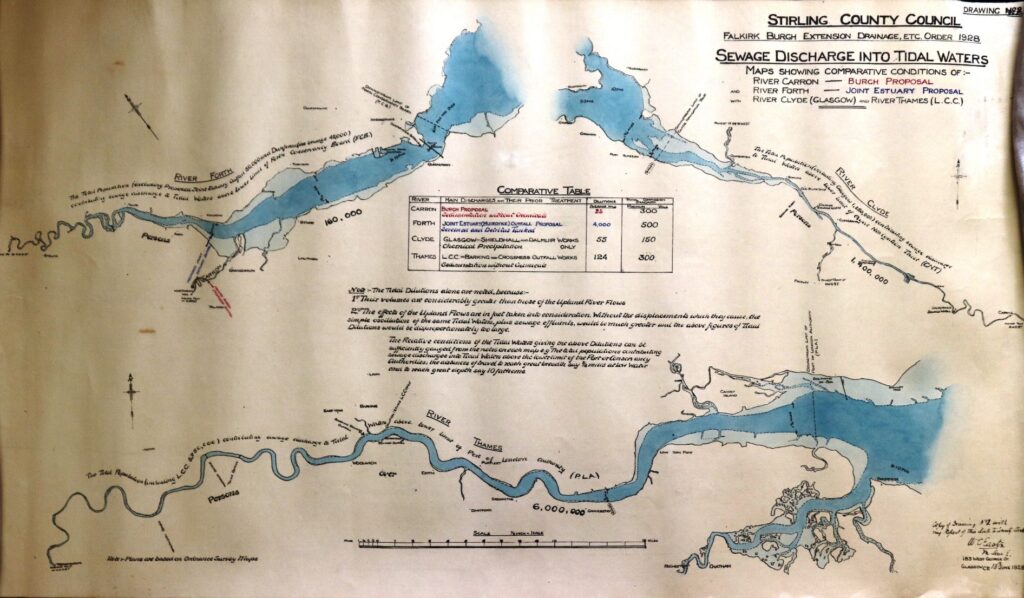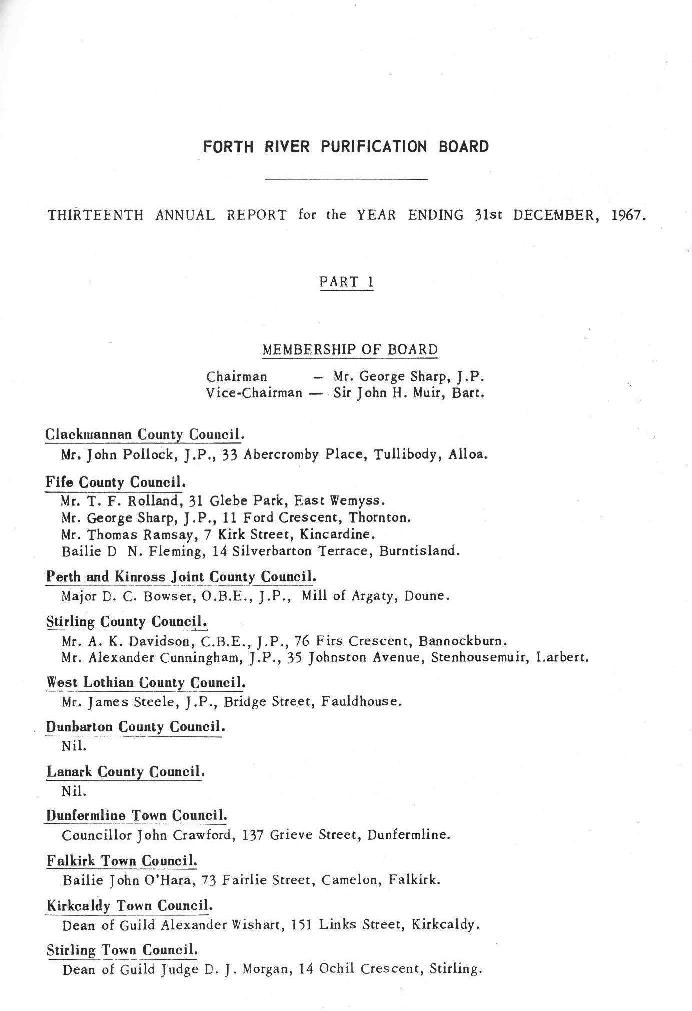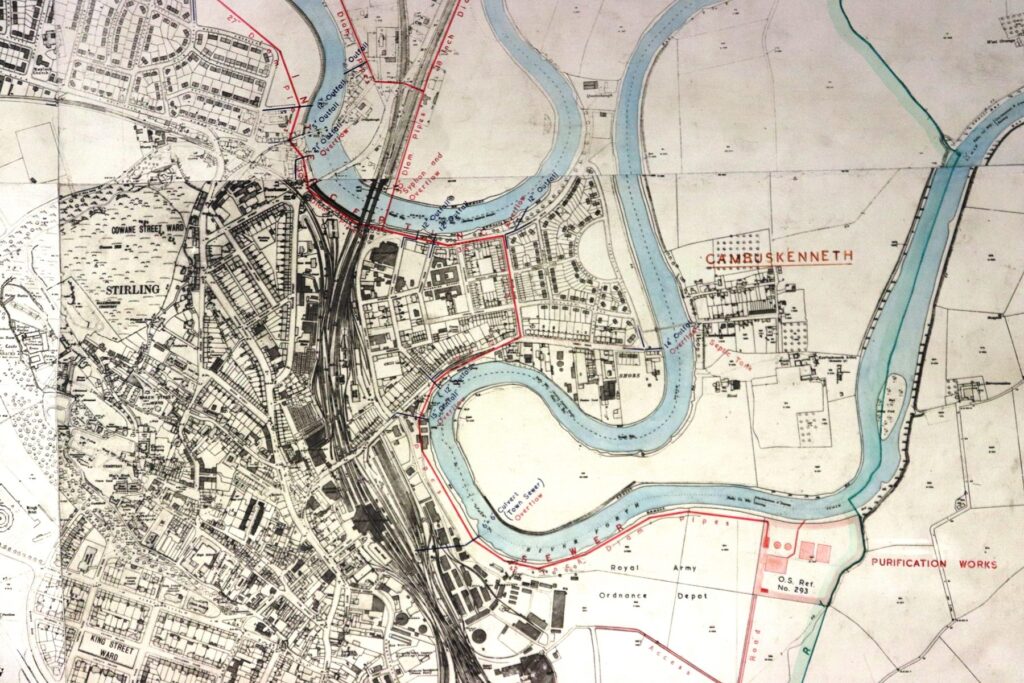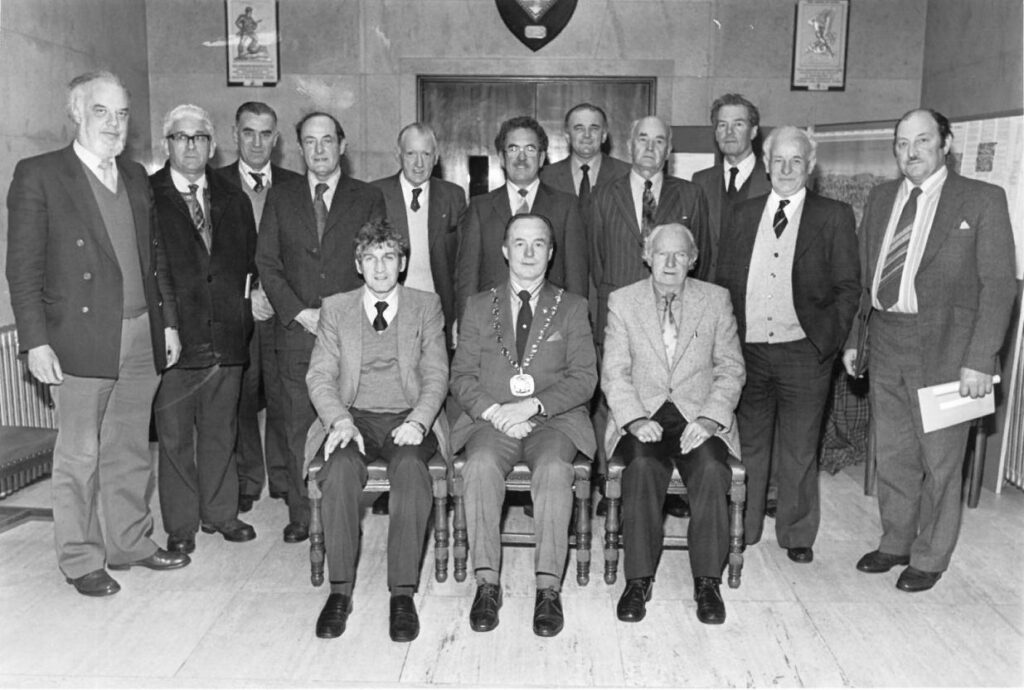October’s Document of the Month focusses on a less glamorous topic as part of our series of posts to mark Scotland’s second Year of Coasts and Waters.
Although the disposal of waste water and other products is not the most romantic of subjects, it is vital to the health and well-being of humanity, particularly those living in towns and cities. The Romans understood the importance of good sanitation, and did build sewers in their settlements in Britain, but these tended to fall into disrepair after the end of the occupation. Modern sewerage systems were developed from the early nineteenth century onwards in Britain, prompted by the growth of population in towns and cities during the first and second industrial revolutions. The development of public sanitation was also hastened by the outbreaks of cholera in Britain from 1832 onwards, the disease being spread in foul water.
There was no central authority for sanitation and water supply in Scotland before the 1967 Water Supply (Scotland) Act, so early sewer systems in the country were built by private undertakings. Prior to the end of the Second World War, there were two hundred and ten different private companies responsible for water supply in Scotland. However, after 1890, the County Councils took responsibility for the exercise of authority under the various public health acts for the whole county apart from the established Royal and Police Burghs. The resulting appointment of Medical Officers of Health and Sanitary Inspectors with their regular reports of nuisances and dangers to public health encouraged the building of sewerage systems in small towns and villages.
By the early twentieth century, advances in the understanding of the transmission of disease led to the notion of the treatment of sewage before it was dispersed. Prior to this, waste water was merely sent into the nearest convenient watercourse a suitable distance away from the site of human habitation. The earliest treatment processes involved gathering the solids for use as fertiliser on agricultural land in a process known as sedimentation, involving the construction holding tanks and channels through which the waste water was pumped. Later biological aerobic and anaerobic treatments were developed, which utilised bacteria to render the waste harmless.
The earliest records that relate to sewerage and waste water treatment that are held in the Council Archives are found in the papers of Stirlingshire County Council. A selection of them are shown here.
Works at Balfron, Stirlingshire went on from 1951 to 1957.
Further pipes were added when new housing developments were built.
As areas grew in size, new drainage and waste water schemes were devised.
The Forth River Purification Board was formed by an Act of Parliament in 1954, one of the seven river purification boards in Scotland. The organisation was responsible for the improvement of water quality and the protection of water resources, and as such, impacted on the further development of waste water processing facilities in the Forth Valley area. This front page of the Board’s Annual Report for 1967 shows the agencies who sent representatives to sit on the Board.
The Forthside Sewage Works was built in 1947 to serve the town of Stirling. The following map shows the original scheme of drains.
Central Regional Council took over the responsibility for water and sanitation for the area in 1975. The picture below shows Drainage Inspectors receiving long-service awards in 1981. Some of these staff members will have worked for the former County Council.
